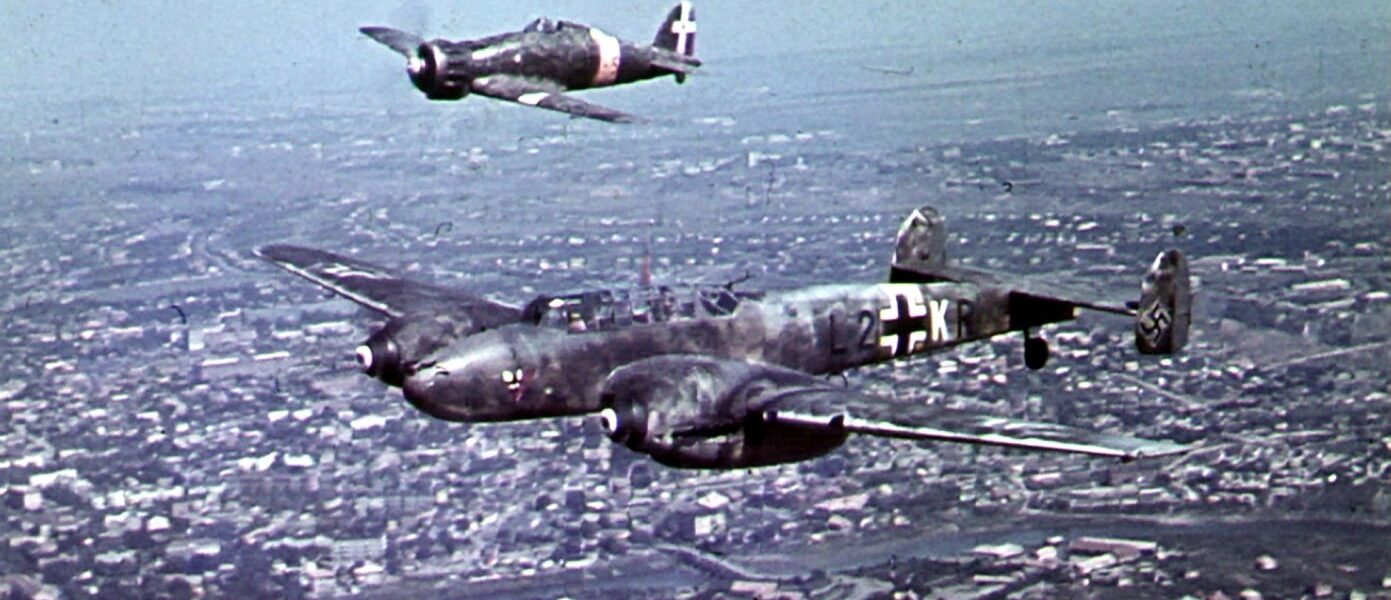
The German Messerschmitt Bf 110 fighter-bomber and an Italian Macchi C.200 Saetta fly over a (southern?) Italian city sometime in 1942. Photographer: Artur Grimm. At least three Bf.110 C-3s were delivered by the Luftwaffe to the Italian Regia Aeronautica for night fighter units. After the Italian crews had been trained and familiarized with the German twin-engine aircraft in Germany, the aircraft were transferred to Italy in July and August 1942 and assigned to the Nucleo Addestramento Intercettori, an interceptor training unit operating within the 235th Squadriglia, which was relocated from Treviso to Lonate Pozzolo near Varese in Lombardy. The role of this unit was to train Italian pilots in new methods of night combat against Allied strategic bombers. In this color photo, the commander of the 235th Squadriglia, Captain Aramis Ammannato, and his dog stand in front of a Bf.110 of the unit in Lonate Pozzolo.
Messerschmitt Bf 110 – Harmless by day, deadly by night
The Bf 110 was designed to fulfill a completely new role envisioned by Hermann Göring’s Luftwaffe: that of a heavily armed, long-range ” strategic fighter .” While the single-engine, short-range fighter was primarily considered a defensive aircraft, what became known as the ” destroyer ” suited the predominantly offensive ethos of the Nazi armed forces.
This would allow them to penetrate deep into enemy airspace and clear the way for bombers to attack their targets without the risk of interception.
Nazi propaganda praised the Bf 110 destroyer as the spearhead of the Luftwaffe. For an ambitious young Luftwaffe pilot, joining a destroyer squadron was a more important prestige object than any other.
This lasted until the summer of 1940. During the Battle of Britain, the losses of the Bf 110 became so severe that the destroyer squadrons had to be escorted by single-seat fighters for a time.
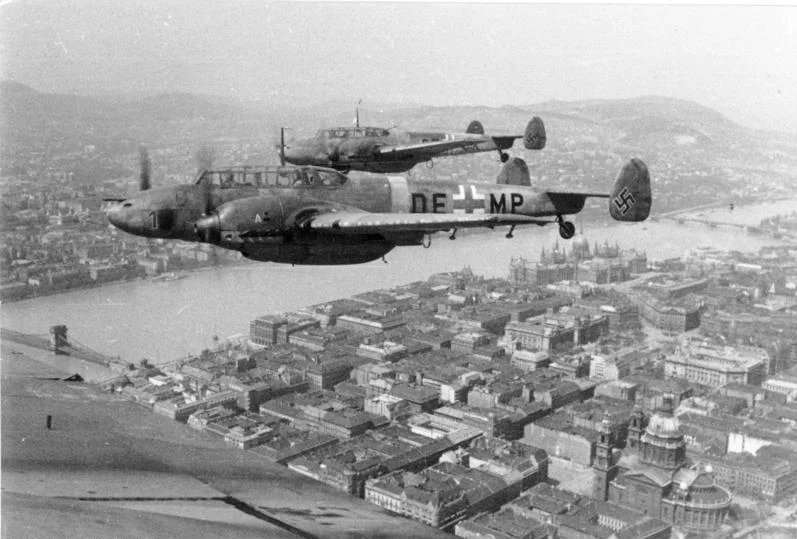
Germany never abandoned the concept of the strategic fighter nor the Bf 110. New twin-engine fighters were developed (although none were particularly successful), and new applications for the Bf 110 were opened up. Initially, it was used as a long-range fighter. Eventually, it found its ideal role: as a night fighter to counter the RAF’s increasing night bombing campaign against Germany.
Origin
The design of the later Bf 110 began in 1934 with a specification from the Reich Air Ministry (RLM) for a Kampfzerstörer , a twin-engine fighter that would have the same speed as single-engine fighters but with considerably greater range and firepower.
The result was a design by Willy Messerschmitt, then chief designer of the Bayerische Flugzeugwerke .
For this reason, this aircraft received the RLM designation “Bf.” It wasn’t until 1938 that the company became Messerschmitt AG, and only the aircraft constructed by the company thereafter received the designation ” Me. ”
Messerschmitt’s design envisioned a sleek, cantilevered, all-metal monoplane with twin rudder and an aluminum outer skin. It would be powered by two newly developed Daimler-Benz DB 600 engines, each producing approximately 900 hp.
Flight testing of the first prototype, the Bf 110V1, began in May 1936. The new aircraft proved flawless in flight, reaching a speed of over 500 km/h in early tests, close to that of contemporary single-engine fighters. The first production version, the Bf 110B-1, was delivered in very limited numbers to the first newly formed destroyer squadron starting in the fall of 1938.

This aircraft was originally designed for a three-person crew: pilot, navigator, and radio operator/gunner. However, in service, most early Bf 110s were equipped with only two crew members: pilot and radio operator/gunner.
The armament was fearsome and consisted of a battery of two 20 mm MG-FF cannons and four MG-17 machine guns, all mounted in the nose, plus a single MG-15 machine gun on a flexible mount in the rear cockpit.
Delivery of the first true production version, the Bf 110C series, began in early 1939. This version was powered by improved DB 601 engines with fuel injection and improved superchargers.
It was variants of this version that were used in combat in the early stages of the Second World War with varying degrees of success.

On duty
Unlike many other Luftwaffe aircraft, the Bf 110 was not deployed in the Spanish Civil War. Its first combat mission was during the German invasion of Poland in September 1939. The Bf 110 performed well in this campaign, as well as in subsequent missions in Norway and Denmark.
However, when the German invasion of Belgium, Holland and France began in May 1940, the situation was not quite so positive.
At this point, the Luftwaffe had approximately 350 Bf 110Cs at its disposal. For the first time, the destroyer was confronted by modern single-seat fighters, including RAF Hurricanes, and suffered increasing losses. In air battles over Dunkirk and during attacks on ships in June/July, the Bf 110 encountered the RAF Spitfire for the first time, which fared even worse.
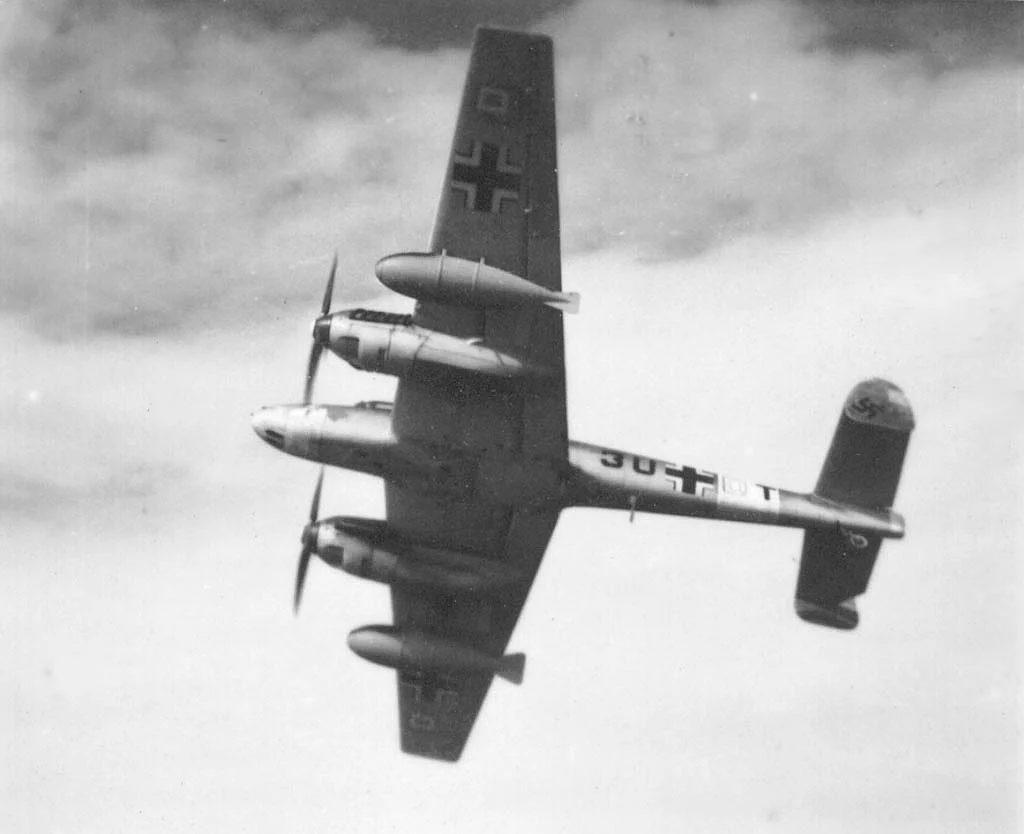
In the Battle of Britain (August – September 1940), the Luftwaffe started with almost 240 available Bf 110s. By the end of the battle, fewer than 40 had survived, and one of the pilots killed in action was Hans-Joachim Göring, the nephew of the head of the Luftwaffe, Hermann Göring.
As a fighter, the Bf 110 had one major drawback: weighing almost four tons, it was heavy, resulting in sluggish acceleration and poor maneuverability. This proved to be serious problems in combat with single-engine fighters, and during the Battle of Britain, Bf 109 fighters were occasionally used to escort Bf 110 formations. It became clear that the Zerstörer concept had serious flaws.
However, the Bf 110 had proven effective in anti-ship and ground attack roles, and the next variants focused on these types of missions.
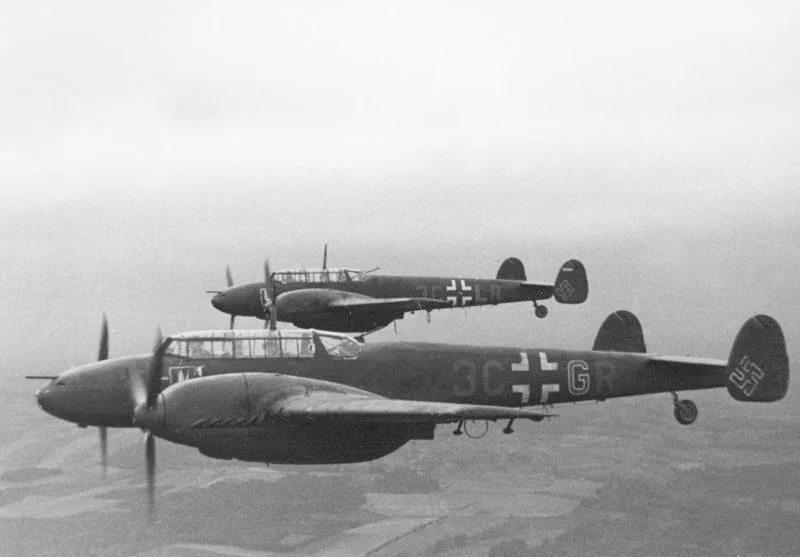
The Bf 110E (the D model was an attempt to achieve greater range by installing a dachshund-bellied auxiliary tank under the fuselage) was equipped with improved armor and mounts for up to four 50 kg bombs under each wing.
The Bf 110F was similar, but had even stronger armor, was powered by an improved DB601F engine, and could carry two 500 kg bombs under the fuselage and up to four 100 kg bombs on wing mounts.
However, production of the Bf 110 declined. In 1940, over 1,000 units were produced, but by 1942, this had fallen to just over 500. This was partly due to the expectation of a successor, the Me 210.

However, the aircraft’s flight characteristics proved so poor that no more than 200 were produced. Although there was no suitable replacement, the Bf 110 seemed likely to be retired from active service altogether. Instead, however, it found a new and unexpected role.
The Bf 110 as a night fighter
Due to unacceptable losses on daytime missions, RAF Bomber Command switched to a night bombing campaign against Germany in the summer of 1940, which increased in scale and pace as the war progressed. In response, the Luftwaffe established the first night fighter squadron , equipped with the Bf 110C, in July 1940.
The Bf 110 had a lot to offer as a night fighter. Its smooth handling made it easy to fly, and its powerful armament enabled it to destroy any RAF bomber. However, it wasn’t much faster than the bombers it was designed to intercept, and the crews of the early night fighters relied on nothing but their own eyesight to find their targets.
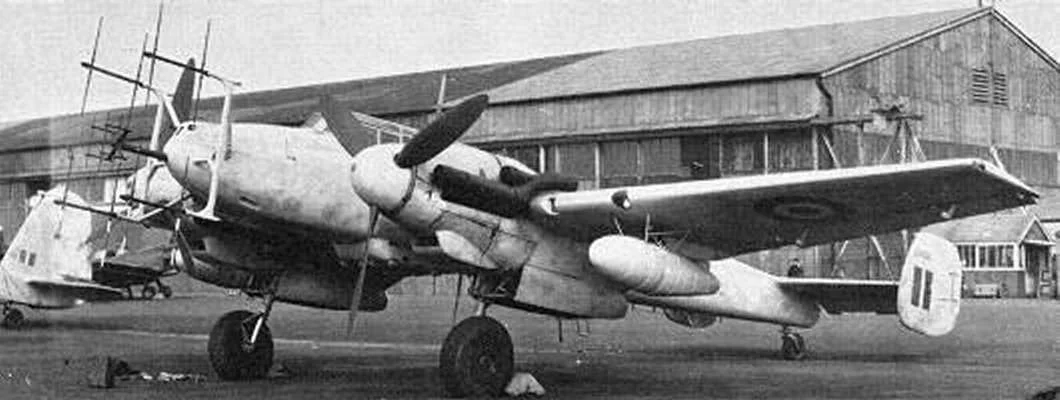
A Würzburg tracking radar could guide a Bf 110 toward an RAF bomber, but it could only be attacked if the fighter had visual contact. This worked to a certain extent on moonlit nights, but on dark nights it was virtually impossible.
It was clear that a more effective means of nighttime target detection was needed. Initially, some Bf 110s were equipped with the innovative ” Spanner-Anlage ” infrared sensor in the nose, but this was virtually useless due to its short range.
Then, in the late summer of 1942, the first Bf 110, designed specifically as a night fighter, the Bf 110F-4, was put into service, equipped with the FuG 202 Lichtenstein air interception radar.

This proved to be a much more effective night fighter and soon after the Bf 110F-4/U1 was introduced, which not only had an air interception radar but also the new “Schräge Musik” weapon system .
This consisted of a pair of upward-firing 20 mm MG FF cannons. This enabled an attack from directly beneath the bomber, and since RAF bombers lacked a ventral turret and belly armor, this quickly proved devastatingly effective. The next Bf 110 model focused almost exclusively on the production of improved night fighters.
The Bf 110G-2 was introduced in early 1943 (the G-1 was a planned new heavy day fighter that never entered production). It featured improved DB 605B engines, the MG FF in the nose was replaced by two Mauser MG 151 20 mm cannons, and the single machine gun in the rear cockpit was replaced by a pair of rapid-firing MG 81 machine guns.

Several variants of the G-2 with minor armament variations were introduced before the final night fighter version of this aircraft, the G-4, was launched.
These aircraft began reaching front-line units in early 1945. Variants included the improved Lichtenstein C-1 air interception radar, the Rosendaal-Halbe system, which picked up emissions from the Monica tail-warning radar fitted to some RAF bombers, and the Schräge Musik weapon system.
The Bf 110 proved to be the Luftwaffe’s deadliest night fighter. Very few aircraft were shot down in this role. Most losses resulted from mid-air collisions, landing accidents, or damage from German anti-aircraft fire.
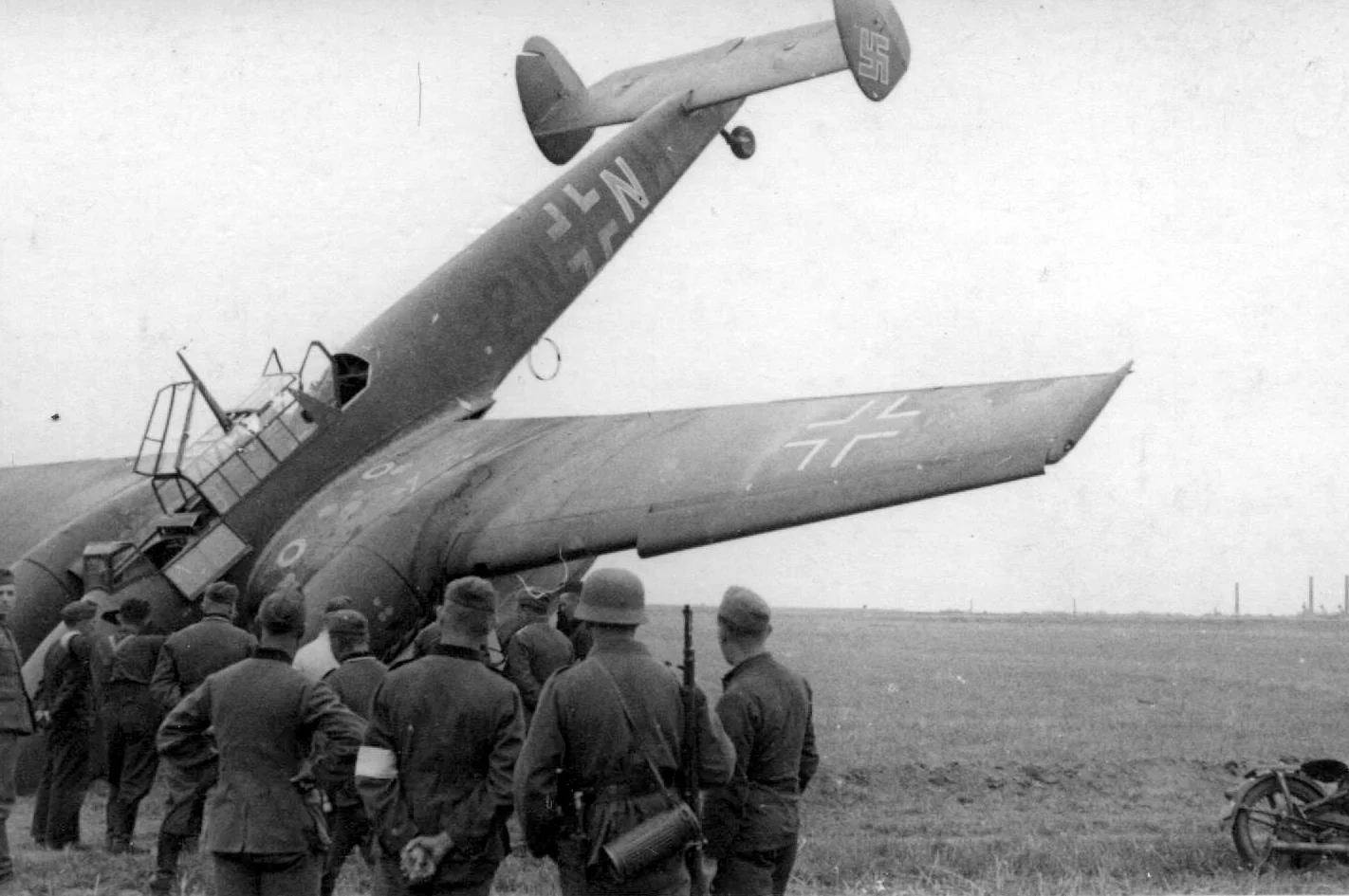
It is estimated that at one point, 30 British bombers were destroyed for every Bf 110 night fighter lost—a kill rate unmatched by any other aircraft type during World War II. Due to this success, Bf 110 production increased. Over 1,500 units were delivered in 1943, and a similar number in 1944.
It is believed that the Bf 110 destroyed more British bombers at night than any other type. Heinz-Wolfgang Schnaufer destroyed 121 British bombers (including nine Lancasters in a single night), making him the most successful night fighter of all time. He achieved all of his kills with variants of the Bf 110.
Diploma
The Nazi destroyer concept proved to be a fatal mistake. Although relatively fast, the Bf 110 was no match for the RAF’s single-engine fighters.
Due to losses during the Battle of Britain, this strategy was abandoned and the subsequent Bf 110s were converted primarily for use as ground attack aircraft on the Eastern Front.
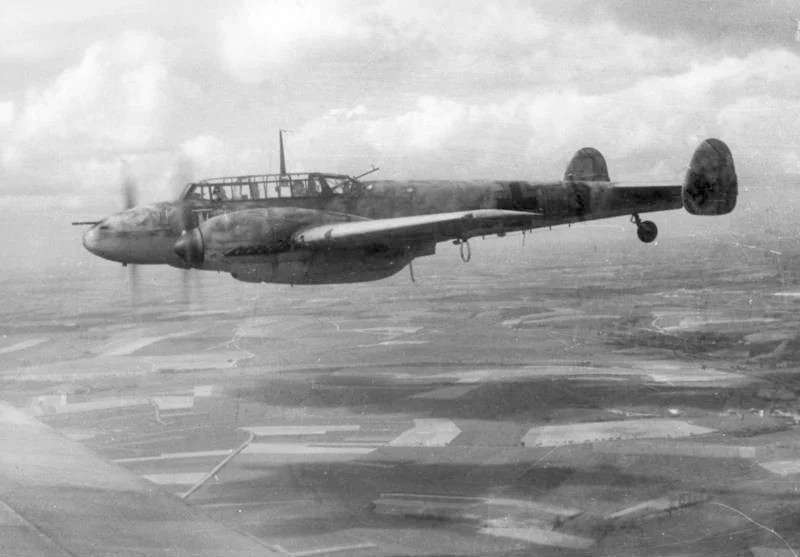
The Bf 110 experienced a brief renaissance as a day fighter when it was used against US daytime bomber raids in 1944/45. However, the same deficiencies that doomed it in the Battle of Britain—sluggish acceleration and poor maneuverability—made it easy prey for escort fighters.
If the Bf 110 were judged solely as a day fighter, it would be completely inadequate. However, as a night fighter, this aircraft proved to be excellent. It was easier to fly and land than, for example, the Ju 88, which was also used as a night fighter, and minimized casualties.
Thanks to its powerful nose armament, it was capable of destroying any British bomber. Its twin engines gave it the power needed to carry heavy air interception radar and special weapons such as the Schräge Musik system.
Some military aircraft fulfill the role they were designed for brilliantly. Some do not. The Bf 110 belongs to the latter category. By 1943, it was practically obsolete and might have disappeared entirely if it hadn’t, almost by chance, found a new purpose—in a role no one had envisioned during its development: as a deadly effective night fighter.
Technical data
- Crew: 2 or 3
- Length: 12.0714 m (39 ft 7.25 in)
- Wingspan: 16.2497 m (53 ft 3.75 in)
- Height: 4,128 m (13 ft 6.5 in)
- Empty weight: 4,425 kg (9,755 lb)
- Maximum takeoff weight: 6,749 kg (14,880 lb)
- Fuel capacity: 1,272 l (336 US gallons; 280 imp gallons) in 4 center tanks
- Engine: 2 × Daimler-Benz DB 601A-1 V-12 reverse piston engines with liquid cooling, each 780 kW (1,050 hp) for takeoff
- Top speed: 475 km/h (295 mph, 256 kn) at sea level
- Range: 774 km (481 miles, 418 nautical miles) at sea level with normal internal fuel at maximum continuous cruise speed
- Service ceiling: 10,000 m (32,810 ft)
- Rate of climb: 11 m/s (2,200 ft/min)
